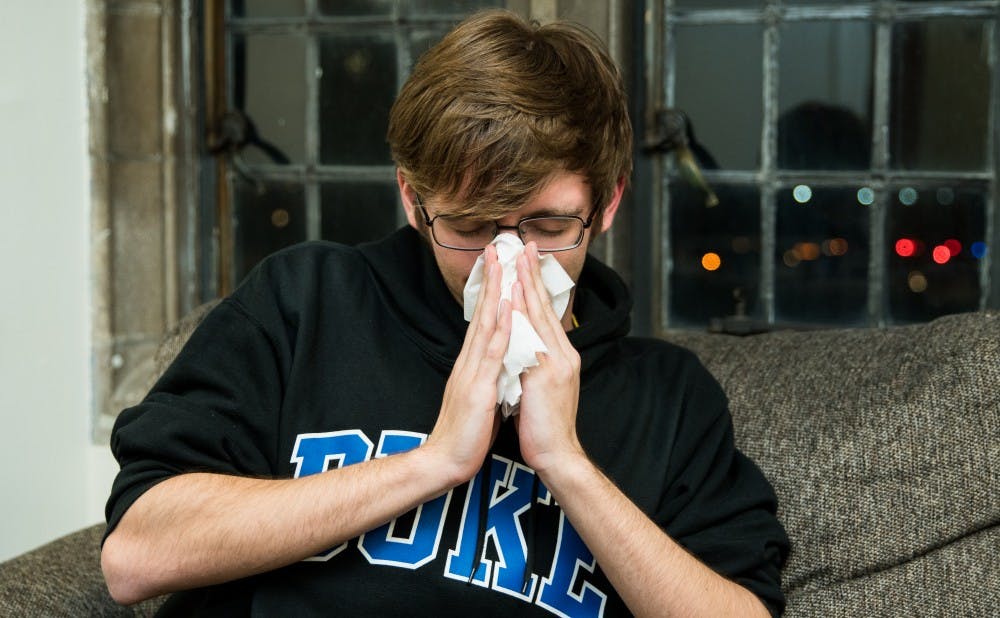What is making you sick? The answer could lie in your mucus.
A team of scientists at the Duke Center for Applied Genomics and Precision Medicine recently found that a specific group of proteins in mucus can be 86 percent accurate in confirming the source of a respiratory infection. Respiratory viruses often cause the flu, the common cold, pneumonia and other illnesses.
After infecting individuals with respiratory viruses, the researchers measured the abundance of the different proteins in the nose and throat area in both healthy and sick subjects. The study revealed that approximately 25 proteins either increased or decreased in number during a viral infection.
The information could eventually lead to a simple and much-needed clinical test able to distinguish between different causes of a respiratory infection, according to the study. Although upper respiratory infections are among the most common reasons that people visit the doctor, scientists and doctors have in the past struggled to develop tools that can differentiate between viral and bacterial infections.
“In our study, we found that these proteins had a very high degree of accuracy in confirming viral infection—86 percent, which is better than most of the testing that’s out there today,” said Dr. Geoffrey Ginsburg, director of CAGPM and senior author of the paper.
Thomas Burke, director of technology advancement and diagnostics for CAGPM and lead author of the paper, added that the ability to rule out a viral infection with this test was 97 percent.
Ginsburg explained that properly identifying the cause of an infection is critical to ensuring that the proper treatment is prescribed.
“In this country at least, the default is for doctors to prescribe antibiotics, which treat bacterial infection, almost independently of knowing what the actual cause is," Ginsburg said. "That has led to the overuse of antibiotics and the development of superbugs—resistant organisms that can be life threatening.
Burke explained that the traditional method of diagnosing a respiratory infection was to search for and identify the pathogen responsible. However, this study attempted to diagnose an infection through a different lens by looking at the host response. The information about the body's reaction can provide researchers with a better understanding of the nature of the illness, he said.
In the past, research has focused on analyzing a patient's blood and protein precursors, or RNA, to determine whether infections are viral, Burke noted. However, this study employed a less invasive approach that relies on mucus to analyze the proteins.
“We reasoned that if the body’s reactions can be measured remotely in the blood, then it’s possibly that they could also be measured in the nose,” Ginsburg said.
The study involved infecting 88 young and healthy volunteers with some type of viral respiratory disease. Approximately half of volunteers actually became sick from the virus. After collecting nose and throat samples of mucus from both groups, researchers reviewed the differences between the healthy and sick.
“We were able to identify over 400 proteins, and it appeared that around 25 of those met our criteria of increasing or decreasing in response to infection,” Burke said.
Although this preliminary study showed resounding success, Burke noted that researchers must continue to verify the data by analyzing real-world cases of infection.
He added that the study only assessed the ability to distinguish between viral infection and lack of infection. However, when a sick patient visits the doctor’s office, it is essential to have a test that can differentiate viral and bacterial infections as well, he said.
Both Burke and Ginsburg said they hope that this research will one day lead to a rapid, cost-effective test that could even be performed at home or at the clinic.
“We feel that this was a significant step forward in bringing more precise infectious disease diagnostics to the clinic,” Ginsburg said.
Get The Chronicle straight to your inbox
Signup for our weekly newsletter. Cancel at any time.

